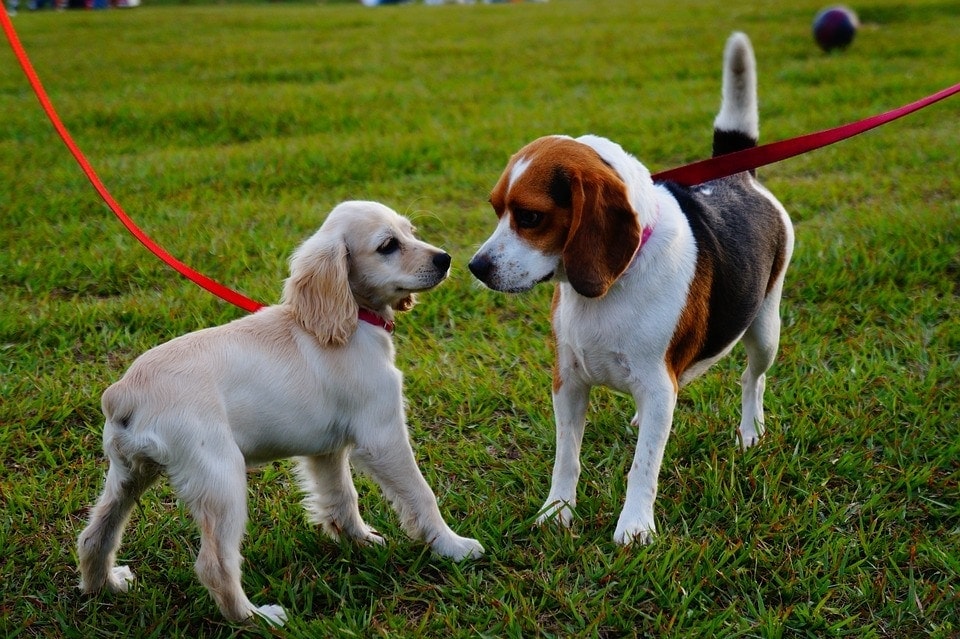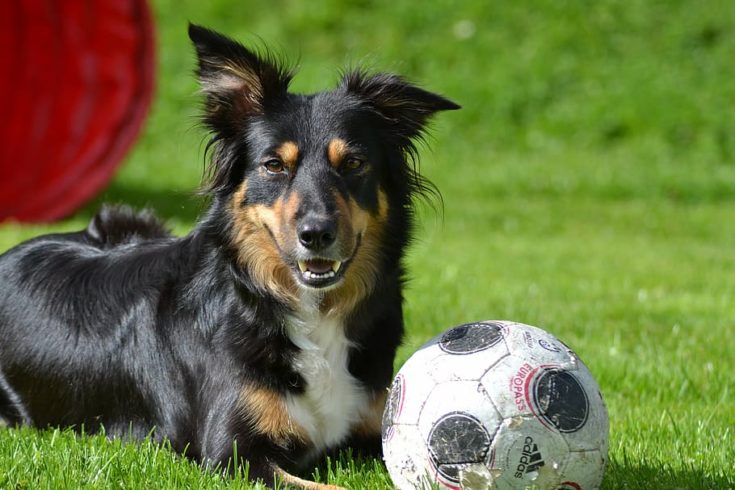3 Tips to Stop Your Dog Lunging and Barking at Other Dogs

Updated on

It’s never fun to head out on a walk with your dog just to fight off tension due to them barking and lunging at other dogs. In fact, the habit of barking and lunging can keep you from taking your dog out for walks at all, which is unfair for both of you. Walking is important for you because it gives you a chance to bond with your pooch, release stress, strengthen your heart, and burn extra calories, among other things.1
Taking regular walks is also important for your dog because the activity provides them with body and mind stimulation, allows them to release pent-up energy, and gives them an opportunity to socialize with other people and dogs. Walking gives you both the chance to practice behavioral training as well!2 So, it’s a win-win situation for everyone involved. But to enjoy walks with your pooch, you have to get them to stop barking and lunging every time another dog struts their way.
This isn’t an easy task, but it is one that’s doable — and is sure to be rewarding when all is said and done. We’ve put together a list of tips that you can use to stop your dog from barking and lunging at other dogs. Hopefully, you will walk away feeling empowered and inspired! Here’s how to stop your dogs from lunging and barking at other dogs:
The 3 Ways to Stop Your Dog Lunging and Barking at Other Dogs:
1. Utilize Relaxation Techniques
Take your dog to the park, and train your dog to heal and relax when other people and dogs come around. When you see someone with or without a dog approaching, lure your pooch to your side and have them lay down. Then reward them with a treat while keeping them distracted until the people and/or dogs pass by. Your dog will learn that nothing but good things come from being relaxed when other people and dogs come around.
When your dog successfully completes a trip to a social scene where they encounter others while staying relaxed, reward them with off-leash play in a safe place to allow them to expel any pent-up energy that they accrued while working to behave for you. Over time, you should be able to start introducing your pooch to the people and dogs that pass by without issue.
But be patient, because this process could take months before you get the final results you want. However, you should start seeing improvements in your dog’s barking and lunging behavior within just a couple of weeks if you’re committed to practicing social relaxation techniques regularly.
2. Utilize Special Tools
There are a few special tools that you can make use of to help keep your dog from barking and lunging while out for a walk or when you’re in a social situation together. First, consider looking into the Thunder Shirt. It’s designed to swaddle your dog like a blanket around an infant to provide instant comfort and reassurance both in social situations and while spending time at home alone. The outfit will soothe your dog while they deal with the stresses of learning how to behave in a social setting. All you have to do is put it on before each walk to ensure a calmer experience for both you and your pooch.
Another tool that you can use to help keep your dog from lunging at other dogs is a no-pull harness. These harnesses will allow you to maintain better control of your dog while you walk and to control their actions better when working to calm them down when another dog comes nearby. Because these harnesses help you maintain better control, they offer additional peace of mind that will give you the confidence to walk your dog when you know that other dogs may be around.
You can also employ a professional dog trainer to help you overcome your pooch’s barking and lunging problems. Doing so can help you solve your specific training problems and allow you to better communicate with your dog. These tools should make it easier for you to minimize the barking and lunging that your dog tends to do when you go on walks together.

3. Teach Your Dog to Turn Away
If your dog simply can’t get used to facing strange dogs when they enter their vicinity, you can teach your dog to turn away from the situation so they aren’t exposed to it overall. Your dog will still know that other people or dogs are around due to their scents and sounds. However, if you can distract them and get them to focus on something else, you can avoid the problem of barking and lunging for the most part.
Always keep treats in your pocket, and make sure that your pooch knows that they are in there. Then when someone approaches during a walk, you can use the treats to redirect your dog toward an opposite viewpoint. Your dog can enjoy their treat while the people and dogs pass, so no issues with barking and lunging develop. It’s a good idea to start by walking your dog far away from the situation and then redirecting their attention to turn away.
Once your dog seems comfortable with the distance and surrounding noises and stimulation, you can start moving close to the social situations while training your dog to turn away from those situations. You should be able to use this technique even when standing directly near another person or dog once your pooch gets used to the exercise.
In Conclusion
We hope that this information helps you better control your dog in social situations where they tend to bark and lunge at other dogs. There are all kinds of tips, tricks, and techniques that can be used to stop the barking and lunging, but we think the ones that we’ve outlined here are the best options that should be considered first.
Do you have any proven tips to share? What have your experiences been with your dog and other strange dogs? Let us know your thoughts and experiences in our comments section below!
Featured Image Credit: Jumpstory










